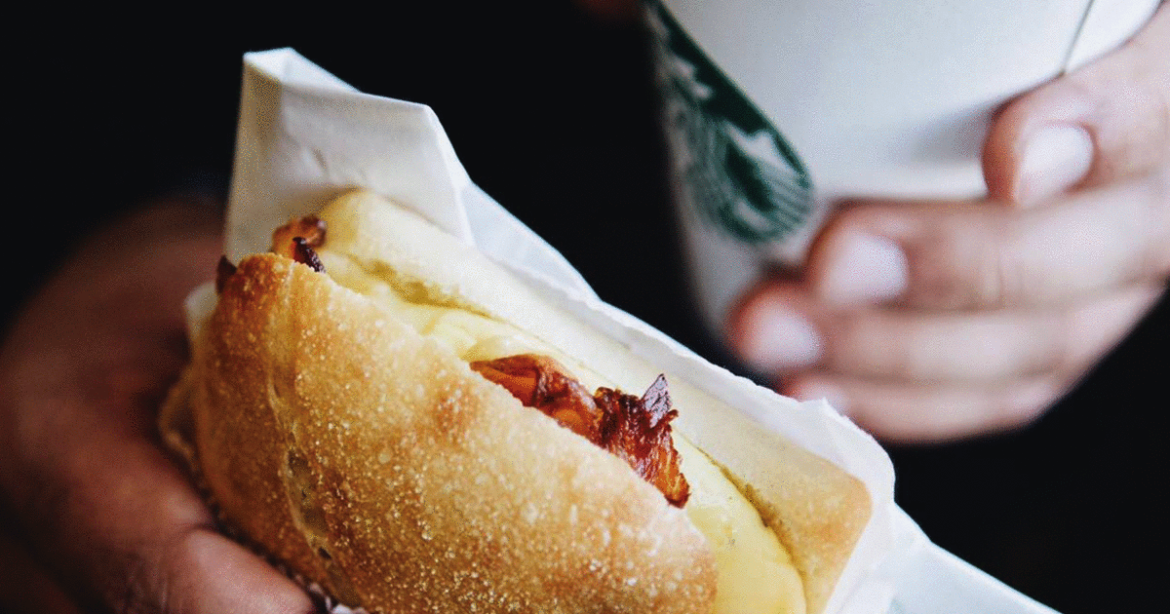Starbucks Finally Starts To Donate All Of Its Unsold Food. But Donating Isn’t As Easy As It Seems.
So Starbucks recently announced that they will be donating 100 percent of their unsold food to charity. They currently are testing out a program in San Diego. When Starbucks announced their intentions, the company stated that they expect to donate five million meals to individuals and families this year and plan to eventually – over the next five years – be doing this at all of its 7,600 locations in the United States. By 2021, they say, they’ll have given away 50 million free meals.
In some ways, it may seem crazy that Starbucks, a crazy successful company, wasn’t doing that already, and, well, to be fair, since 2010, they have been donating unsold pastries. It’s just that now they’re donating perishables, too, like their salads and sandwiches.

But apparently, not so crazy. Many restaurant, diners and coffeehouse owners say that the logistics of donating food to homeless shelters and charities is a little trickier than you might think. That doesn’t mean it can’t be done, of course, or that restaurants, diners and coffeehouses shouldn’t try to donate food, of course, and plenty do. For instance, Devocion, a coffeehouse in Brooklyn (they have one in Colombia as well), donates any coffee beans older than 30 days old to City Harvest, a New York City food bank, and then you have much bigger corporations like Panera Bread that also gives away food that would otherwise be tossed out.
In fact, for some time now, Panera Bread has an extensive program that they called Day-End Dough-Nation (clever wordplay there), in which it donates perfectly good but not fresh food to soup kitchens, shelters and so on.
But, again, it takes some planning to give food away, if you’re going to do it on a regular basis. Some of the challenges all food establishments face in giving away food to charities include…
Food banks and shelters don’t always want or need what you have. Cecil Rodriguez, the executive chef at Beef & Barley in Chicago, says that he works with a local shelter to make sure food doesn’t go to waste, but in the beginning, it wasn’t always so easy.
“There were times I tried to donate large quantities of bread to a shelter, but they could not take it because the majority of donations from restaurants are bread and they just don’t have enough room for it,” he says.
He adds that the homeless situation is serious enough that in Chicago, that often he puts food in containers, directing his staff to hand them out to people in need.
“Even though it’s sad to say, there’s a homeless guy on almost every corner in the city,” Rodriguez says.
Not every company can afford to transport food to charities. Restaurants and other eateries operate on pretty thin profit margins. And unless a shelter is just down the street, it can be challenging to send a staff member with a delivery to a shelter every day, or every day or so. Either you’re adding work time to your employee’s paycheck, or they’re making the delivery during their shift instead of tending to their regular work, and on the challenges go.

Steve McGlynn, an advertising guy who lives in an apartment above an Alice’s Bakery & Confectionary in Ambler, Pennsylvania (they have one other location in North Wales, Pennsylvania), says that because of those type of logistics, he began volunteering to share the time and effort of driving in some of the surplus food that Alice’s Bakery has at the end of the day.
Usually, it’s “baguettes, blue cheese and cracked peppercorn breads, focaccia, a variety of loafs, croissants, pastries, and a variety of specialty cupcakes,” says owner Dennis Darr.
McGlynn says that if more people volunteered to take in donated food from a favorite eatery on their way to or from work, a lot of food might avoid being thrown into a dumpster.
Leftovers aren’t always consistent. It may be a no-brainer to go to a homeless shelter or food bank, or ask them to come on over, if your restaurant has a pantry-full of perishables to give away, but if we’re talking an eighth of a pantry, it can be a tougher call.

For instance, Michael Grant, owner of Antico Noè, an Italian restaurant in New York City, says that his establishment often has leftover panini after a large event, but they never know if they’ll have a lot or a little, when it comes to food to give.
“Since we don’t know how much we have to donate until after the event, it is often hard to coordinate a pickup in advance,” says Grant, who also gives food to City Harvest. “If they have somebody in the area, they will send a driver, but usually we have to drop of the product at one of their distribution centers.”
Grant adds that he is happy to have his staff make a drop-off, but obviously if you’re a smaller restaurant, with fewer resources, it can get complicated.
Still, given how much food goes to waste in the world, it’s great when restaurants and coffeehouses and other establishments do the right thing and try to find a market for their food, even if it isn’t a paying market. That said, it does pay off for business owners, even if not in a monetary way, according to Darr, the guy who owns Alice’s Bakery & Confectionary. He says he really realized the impact food establishments can have after seeing a mother and her children at a homeless shelter open a box of his cupcakes.
“The kids’ eyes absolutely lit up when they saw the gourmet cupcakes. Treats, especially these treats, aren’t a part of their world,” he says. “We all bond over food, and by making this connection, we can help our communities in a very meaningful way.”

